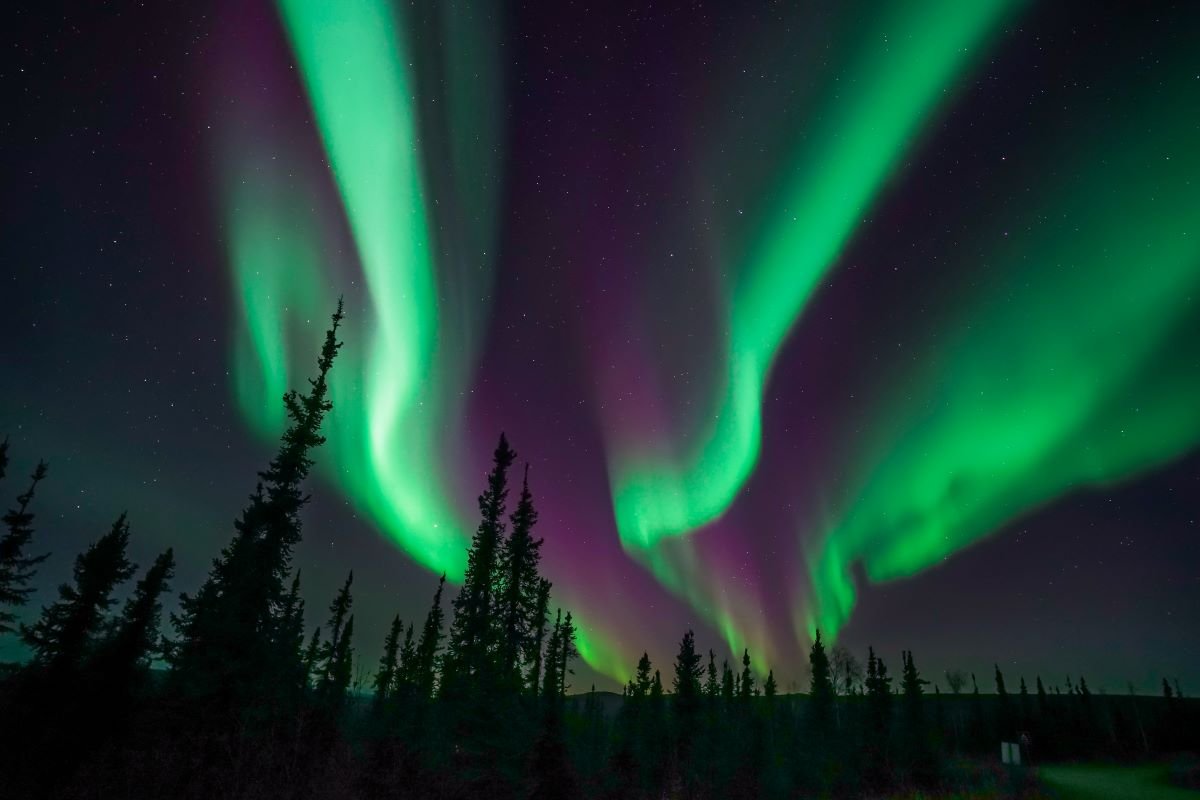Dazzling Aurora Alert: Northern Lights Could Light Up New Year’s Eve
The optimal time to catch the aurora borealis is anticipated between 10 p.m. and 2 a.m. local time. For the best view, head to areas with minimal light pollution.
On New Year’s Eve, the sky may offer more than just fireworks as a dazzling natural display of the northern lights is anticipated to cap off the year. According to the NOAA Space Weather Prediction Center, a G3 (strong) geomagnetic storm watch has been issued for Tuesday.
This storm is expected to occur due to a coronal mass ejection (CME) that erupted from the sun on Sunday and is predicted to reach Earth, creating conditions ideal for the aurora borealis to light up the night sky in parts of the country.
The NOAA Space Weather Prediction Center predicts that the northern lights could be visible as far south as northern Iowa and southern Wisconsin. This stunning phenomenon, known as the aurora borealis, has made several appearances across the United States throughout the year, painting the night skies with breathtaking hues of pink, green, and blue. Each display has captivated onlookers, offering a rare glimpse of this mesmerizing natural spectacle.

According to the NOAA Space Weather Prediction Center, the optimal window to witness the northern lights is between 10 p.m. and 2 a.m. local time. To enhance the chances of seeing this celestial display, viewers are encouraged to move away from areas with significant light pollution, as darker skies provide a clearer view of the aurora. Adding to the ideal conditions, Monday’s “Black Moon”—a rare second new moon within the same month—will keep the night sky exceptionally dark, offering an even better opportunity to experience the vibrant colors of the northern lights.
The cause of the upcoming northern lights display can be traced to a coronal mass ejection (CME)—a massive burst of plasma and magnetic energy—that was launched from the sun on December 29. This CME is headed directly toward Earth, but it isn’t acting alone. Over the past few days, the sun has unleashed multiple eruptions, several of which are also Earth-directed. These events are expected to create strong geomagnetic storm conditions on December 31, according to Solar Astrophysicist Ryan French.
“The Sun has really stepped up over the past few days, with frequent solar flares, including a powerful X-class event!” French wrote in a post on X, formerly known as Twitter. He explained that some of these solar flares resulted in Earth-directed CMEs, which are anticipated to generate a strong geomagnetic storm just in time for New Year’s Eve, creating ideal conditions for auroras to light up the sky.
When coronal mass ejections (CMEs) reach Earth’s magnetosphere, they carry with them a surge of electrically charged particles, known as ions. Upon colliding with Earth’s magnetic field, these ions can trigger geomagnetic storms, which are powerful disturbances in our planet’s magnetic environment.
During these storms, the ions interact with gases in the Earth’s upper atmosphere, such as oxygen and nitrogen. These collisions release energy in the form of light, resulting in the mesmerizing displays we know as auroras. In the Northern Hemisphere, this phenomenon is called the northern lights, or aurora borealis, while in the Southern Hemisphere, it is known as the southern lights, or aurora australis. These captivating light shows are a beautiful byproduct of the dynamic relationship between the sun’s activity and Earth’s protective magnetic shield.


Comments are closed, but trackbacks and pingbacks are open.